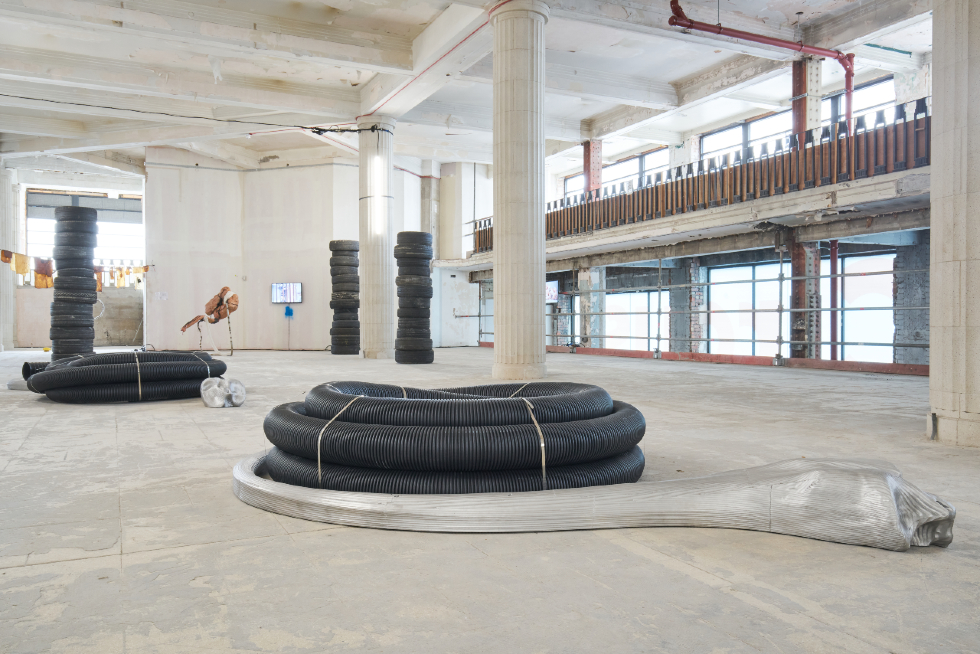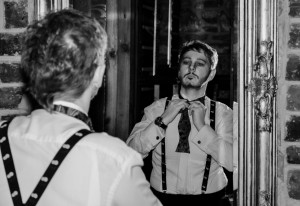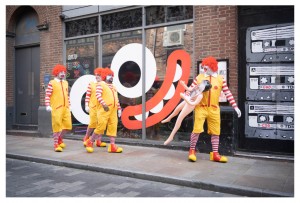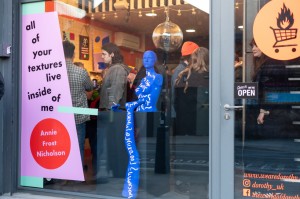Time Has A Shape: Ian McMillan On Alice Channer // Liverpool Biennial 2021

“This work takes time. This work marks time. This work is an eclipse of the past And the present.” In a new commissioned text, poet, journalist, playwright and broadcaster Ian McMillan responds to the sculpture of Alice Channer, which represents the passing and scale of geological time…
Time has a shape
And it is this. Or is it this?
A spider rushes across the floor
As though it is late for something;
My shape, my time. Its shape,
Its time. Each shape’s story
Is a slow one. Late.
Time has a shape, and is it this?
This shape has a shape, moulded
By time. The spider will pause,
Pauses, has paused, surveying time’s
Malleable shape, checking a spider-
Diary, a spider-calendar, a spider-
Compass. Time has a shap
E.
And in this light, in this tick of that clock,
The spider is vast
And I am tiny and vast
And the spider is tiny.
Time has a pleat; time has a fold. Once, when I was very young, I stood in the back garden with my dad in the very early morning and we watched a partial eclipse of the sun. Later, when I saw watercolour paintings, I realised that was what the sky looked like. That or the Chinese silk painting my dad brought home from Shanghai sometime in the mid-1950s. That eclipse morning he wore his dressing gown and his uncombed hair stuck up like a kind of code. “I once saw one of these from the deck of a boat on The South China Sea” he said, his voice far away. The milkman’s float played its glass percussion outside. “Listen” my dad said, as the milkman’s float stopped at the end of the street. “The birds have stopped singing.” And they had. And if I was to make a sculpture about time it would have the silence of that early morning in it and there would be eclipsed light in the glass of huge milk bottles that bobbed in a sea that stretched from here to there, in pleats and folds, pleats and folds of water, folds and pleats of time. Those milk bottles, bigger than the moon. The sun, smaller than me. Time, tinier than a blackbird’s silent beak of gold. All at once: big/small.
The door into the garden left open, of course, all through this biennial. Whatever the door is. Whatever the garden is. Whatever open is.
All at once; this work makes me
Examine that phrase. Everything is here
In a line that isn’t a line.
This work takes time. This work marks time.
This work is an eclipse of the past
And the present,
Held tight for the time you
Stand by it, held still as time
Eclipses itself
As you inhabit this work
And it inhabits you.
And now the spider has gone
Except it is still there
In these lines. My dad
Gone for so long,
Still here. Time is a pleat,
Time is a fold. There he is:
In that sea of memory,
In the object that time is,
That object we made ourselves
And placed there. And there.
And there. And there. And here:
(Pointing to head.) (Pointing to eyes.)
Our perception of what we are made of…
Ian McMillan is poet-in-residence for The Academy of Urbanism and Barnsley FC. He presents The Verb every week on BBC R3 and he’s a regular on BBC Breakfast, Coast, Pick of the Week, You & Yours, Last Word and The Arts Show.
Alice Channer (b. 1977, Oxford, UK) lives and works in London, UK. She uses sculpture to stretch out, slow down and speed up industrial and post-industrial production processes.
This new text was commissioned by Liverpool Biennial and is part of a creative-critical series published exclusively by The Double Negative. Writers were given free rein and approximately 500 words to respond to any Biennial 2021 work in any style, tone or format that they wished. #LB2021
You can see Alice Channer’s work as part of Liverpool Biennial 2021 at the Lewis’s Building until Sunday 27 June 2021
Image: Alice Channer, Ammonite, 2019. Installation view at Lewis’s Building, Liverpool Biennial 2021. Photography: Rob Battersby





